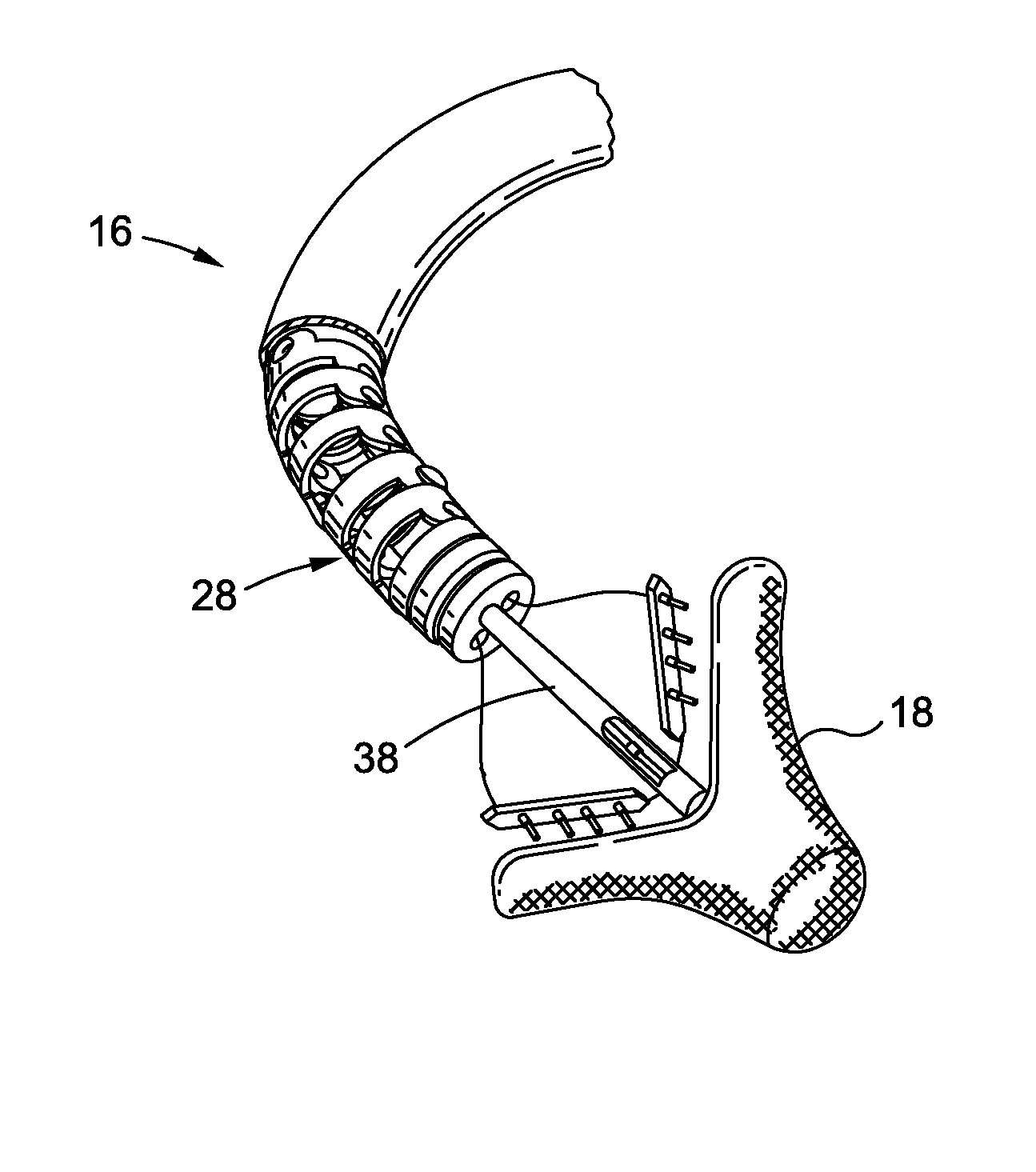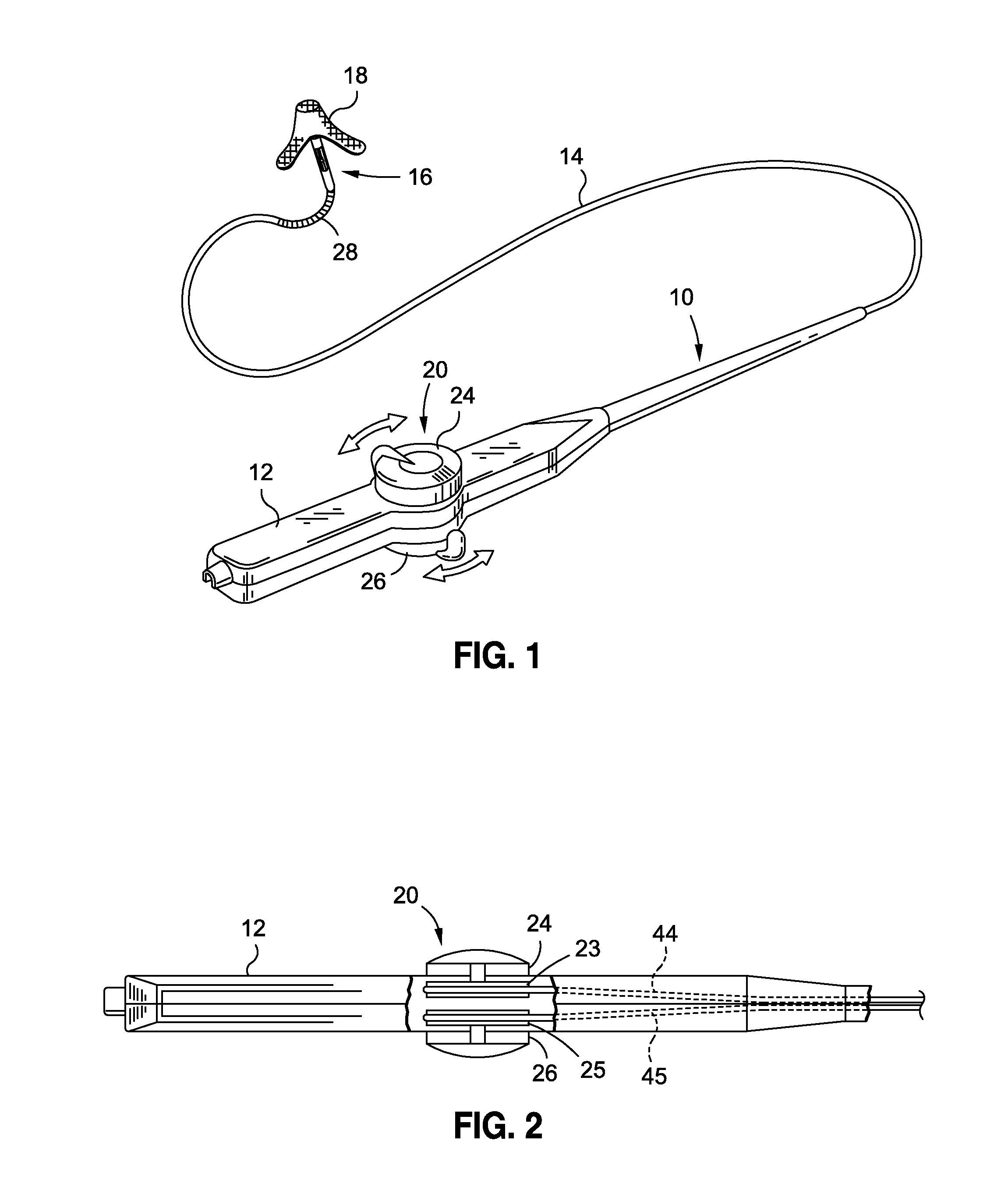Steerable assembly for surgical catheter
a technology of surgical catheters and assembly parts, applied in the field of catheters, can solve the problems of affecting the operation, affecting the operation, and unable to permit the physician to control the distal end of the catheter, so as to achieve the effect of denying the surgeon the required degree of control
- Summary
- Abstract
- Description
- Claims
- Application Information
AI Technical Summary
Benefits of technology
Problems solved by technology
Method used
Image
Examples
Embodiment Construction
[0040]With reference to the figures, preferred embodiments of the invention are described. The specification discloses features of a bendable and steerable assembly that can be bent in compound and complex ways for greater maneuverability within the body and, ultimately, enhanced efficacy of the operative device carried by the bendable assembly, which, in some embodiments, may be a catheter, or may be configured to receive a catheter through a central bore. The illustrated and preferred embodiments disclose and describe these structures, systems, and techniques in relation to mitral valve repair, although the same may be used in conjunction with any procedure requiring complex maneuverability.
[0041]FIG. 1 shows a catheter 10, which includes features of the invention. The catheter 10 includes a handle 12 and a flexible tubular catheter body 14. In the illustrated and exemplified embodiment of the catheter, the distal region 16 may, for example, carry a clip device 18 for performing m...
PUM
 Login to View More
Login to View More Abstract
Description
Claims
Application Information
 Login to View More
Login to View More - R&D
- Intellectual Property
- Life Sciences
- Materials
- Tech Scout
- Unparalleled Data Quality
- Higher Quality Content
- 60% Fewer Hallucinations
Browse by: Latest US Patents, China's latest patents, Technical Efficacy Thesaurus, Application Domain, Technology Topic, Popular Technical Reports.
© 2025 PatSnap. All rights reserved.Legal|Privacy policy|Modern Slavery Act Transparency Statement|Sitemap|About US| Contact US: help@patsnap.com



